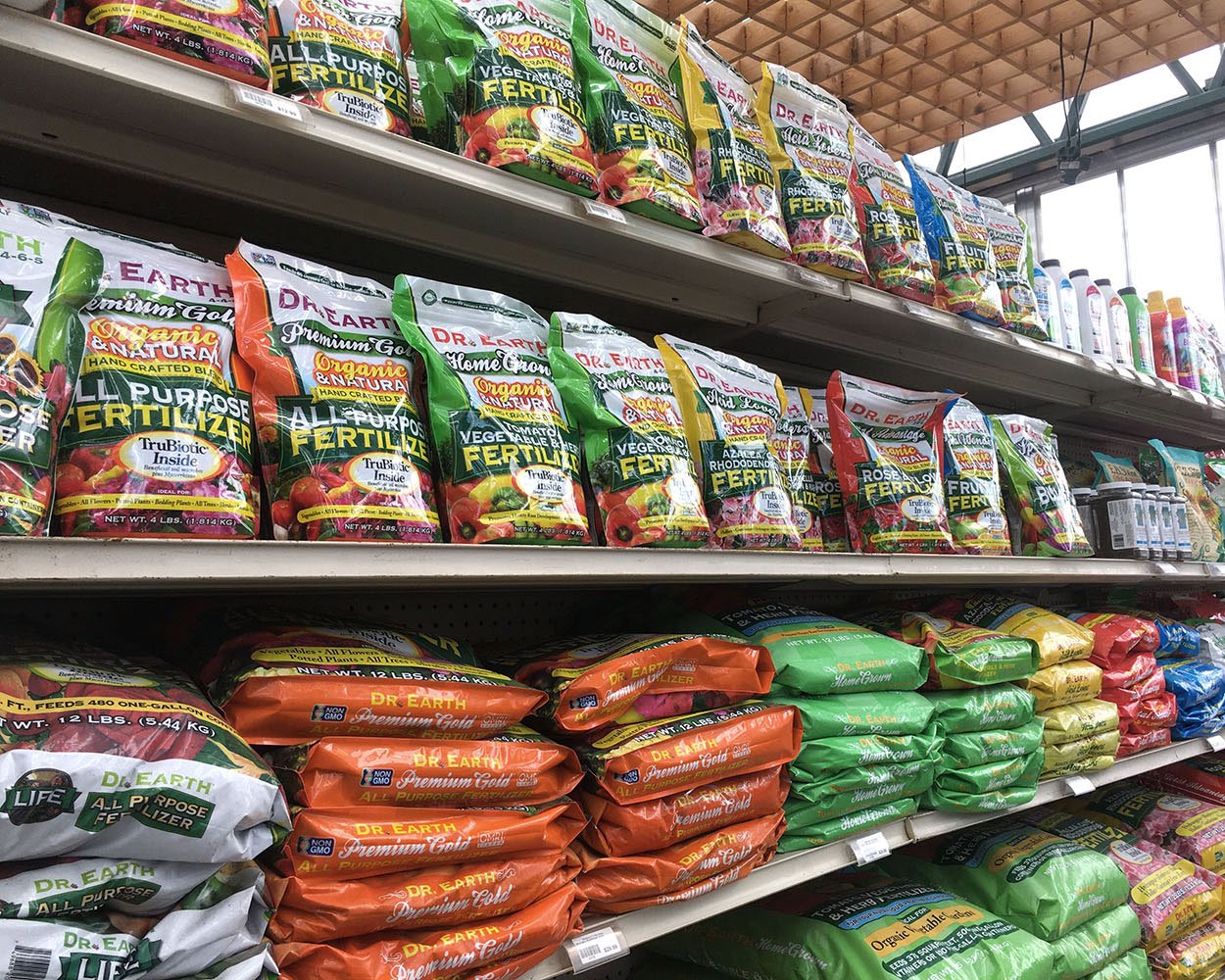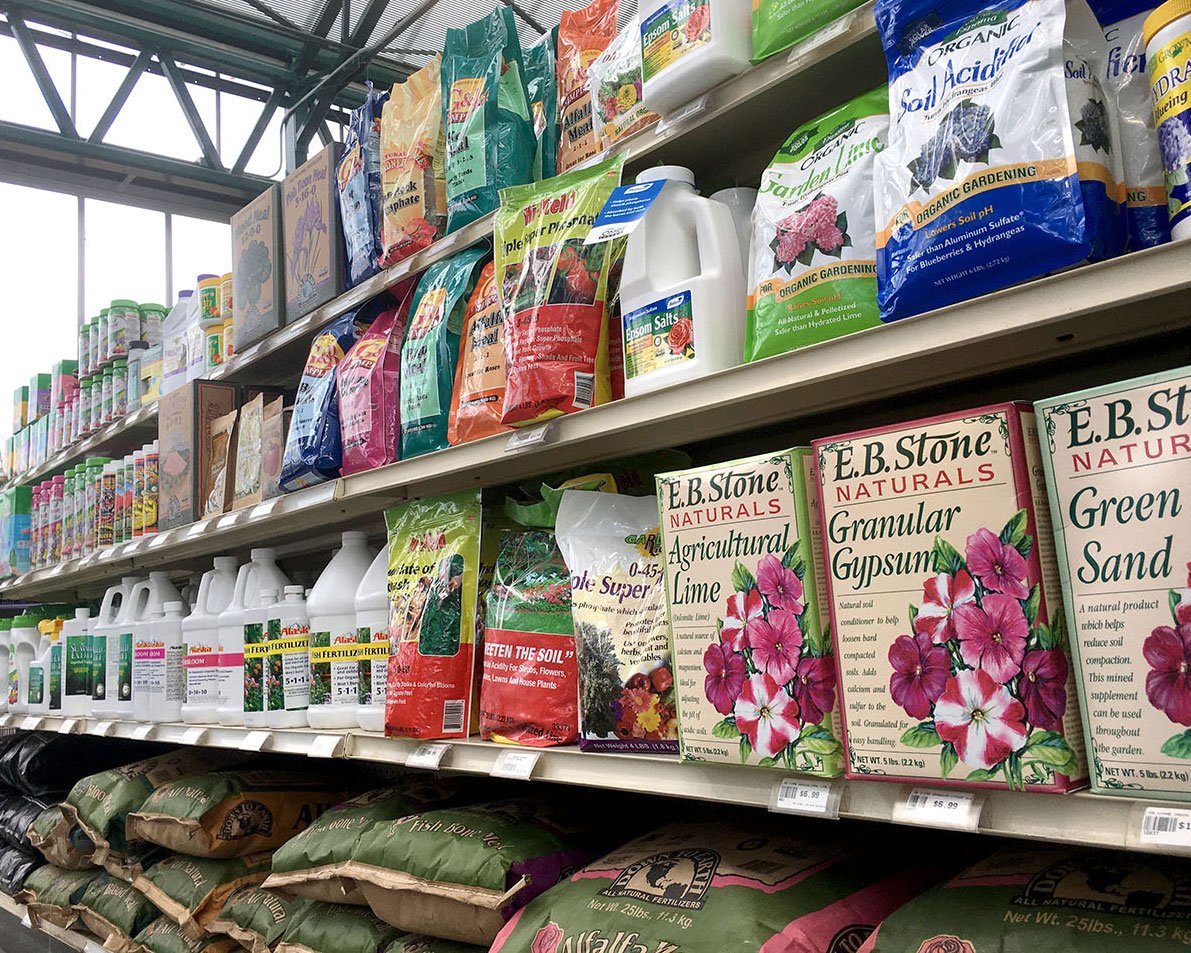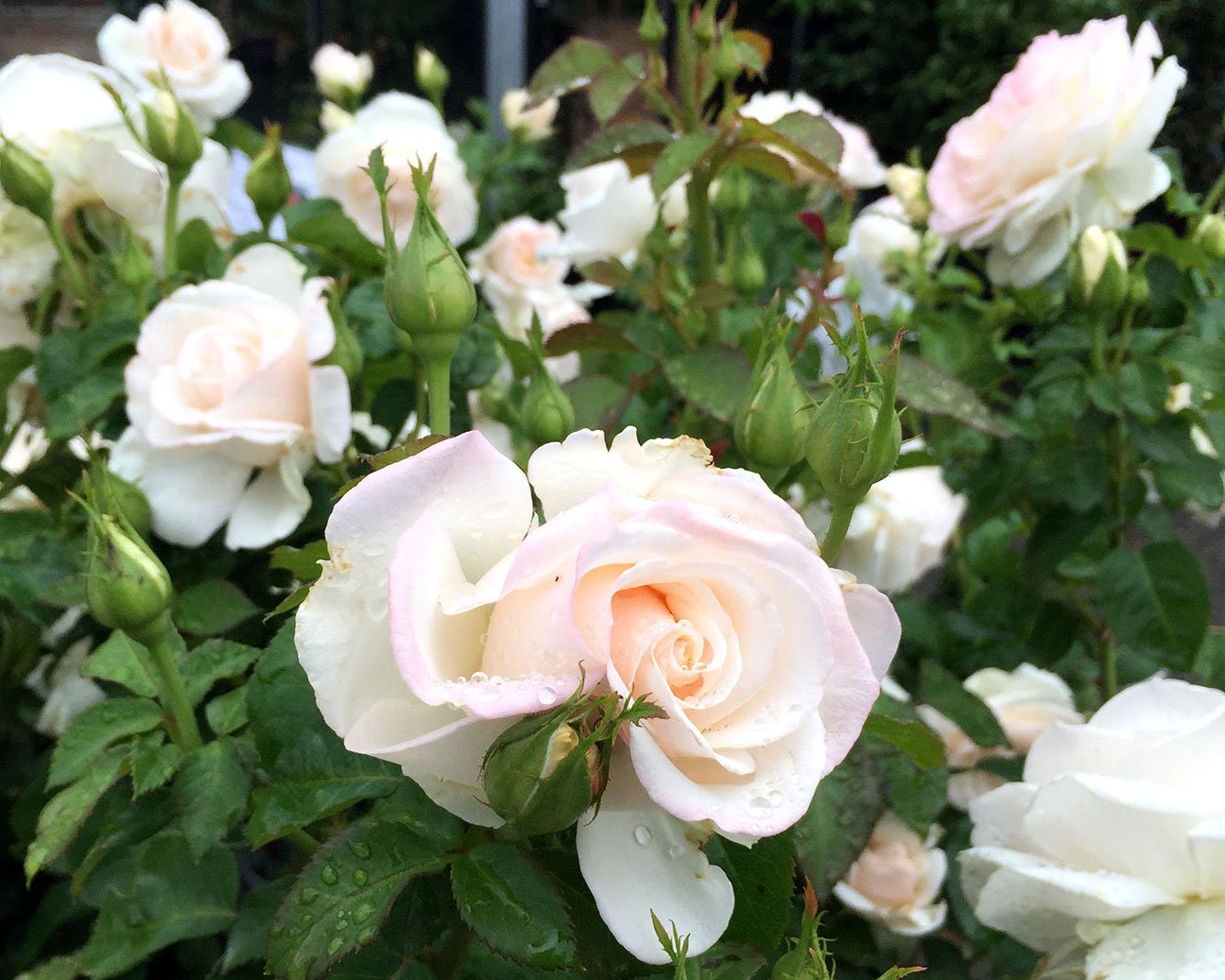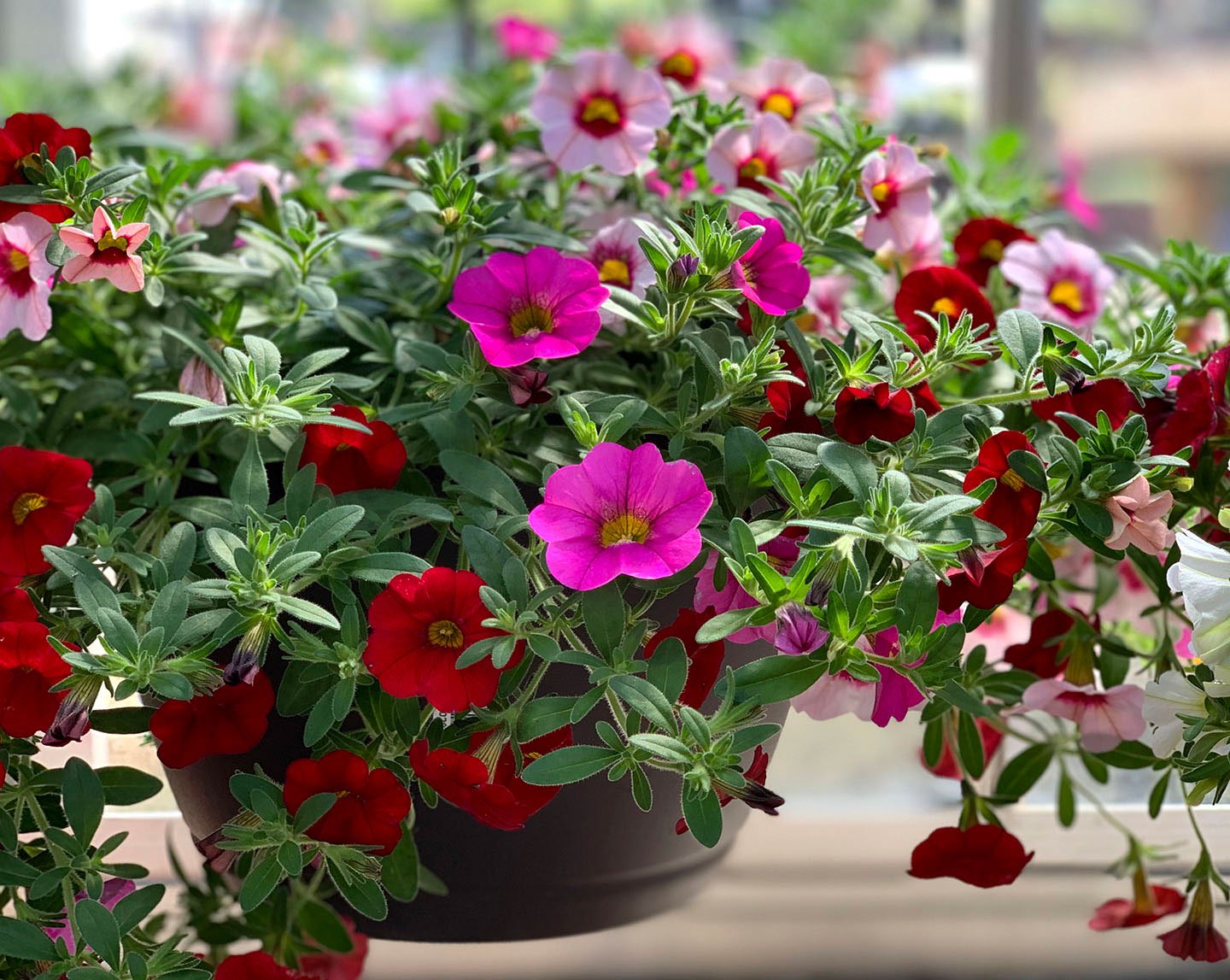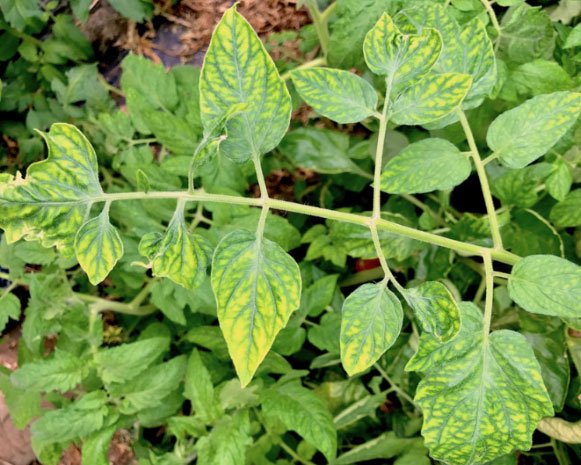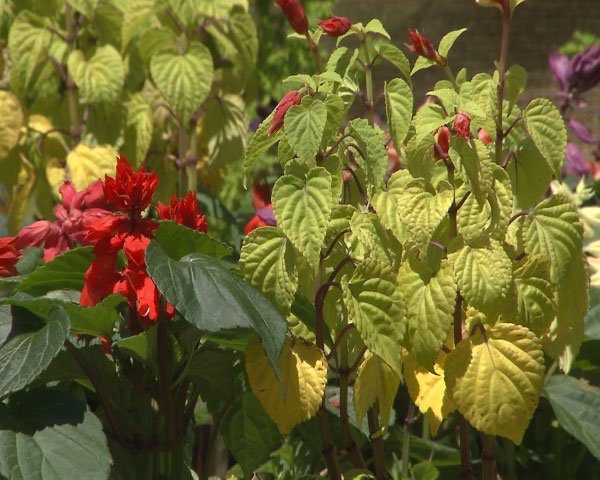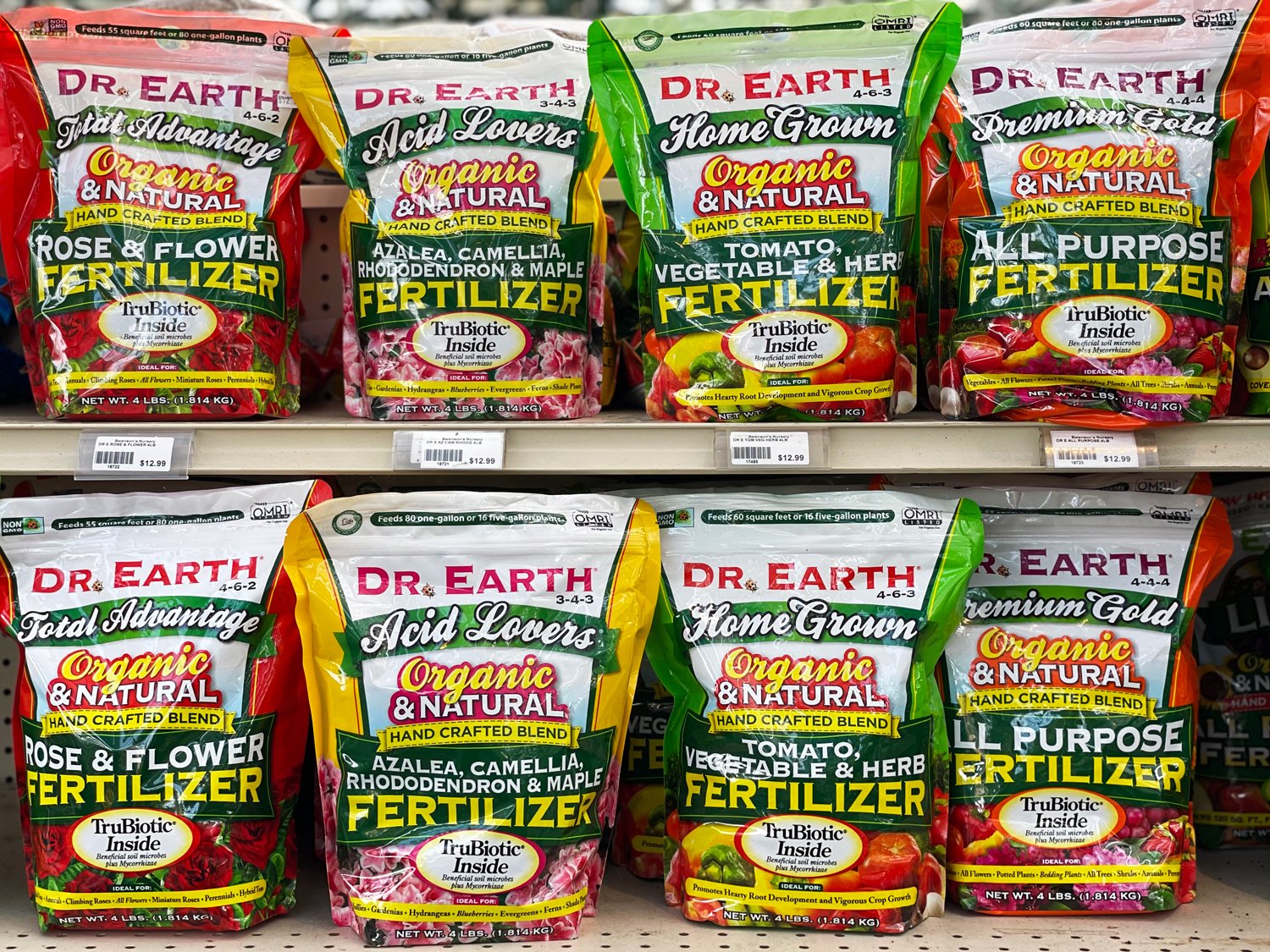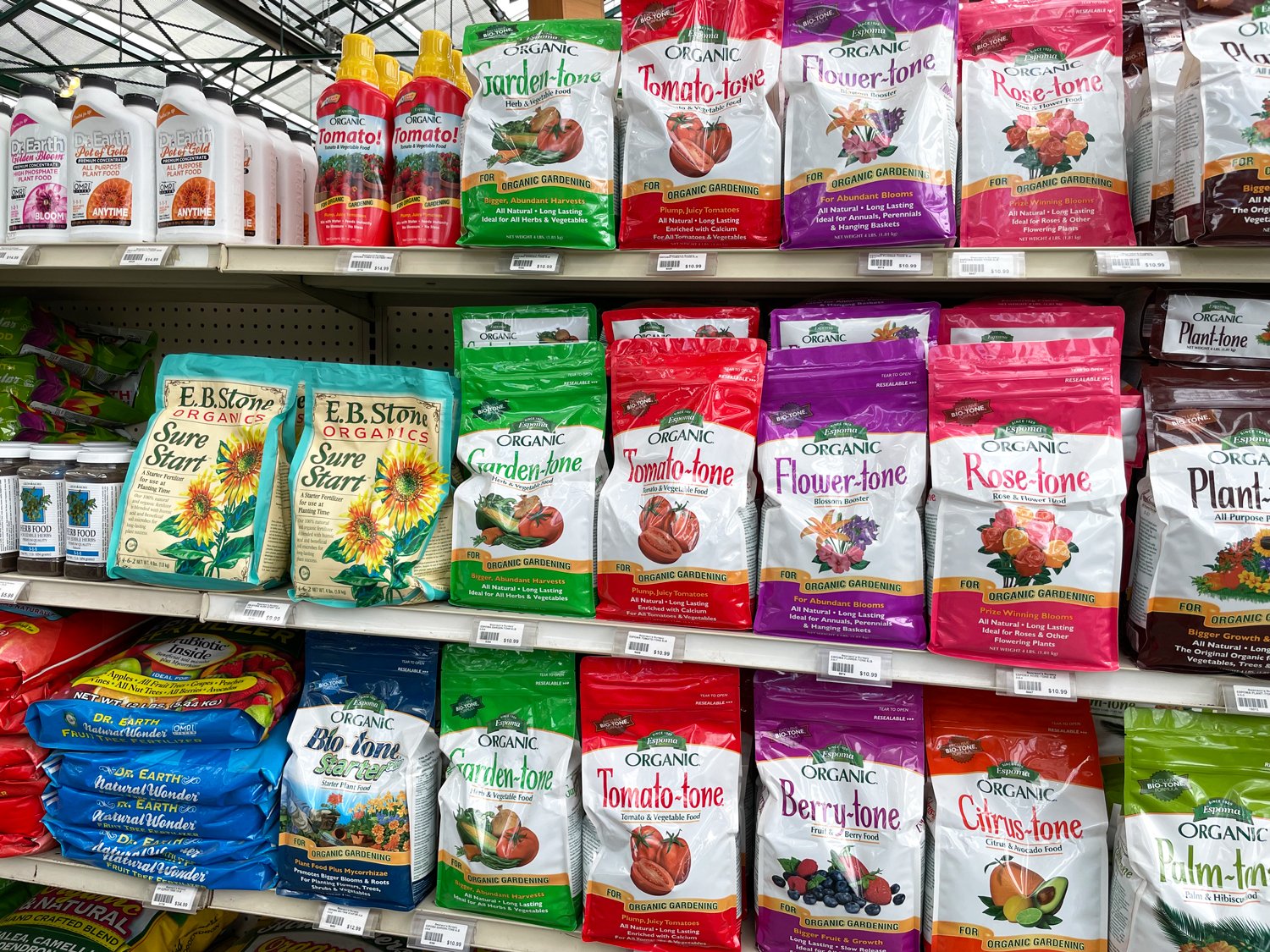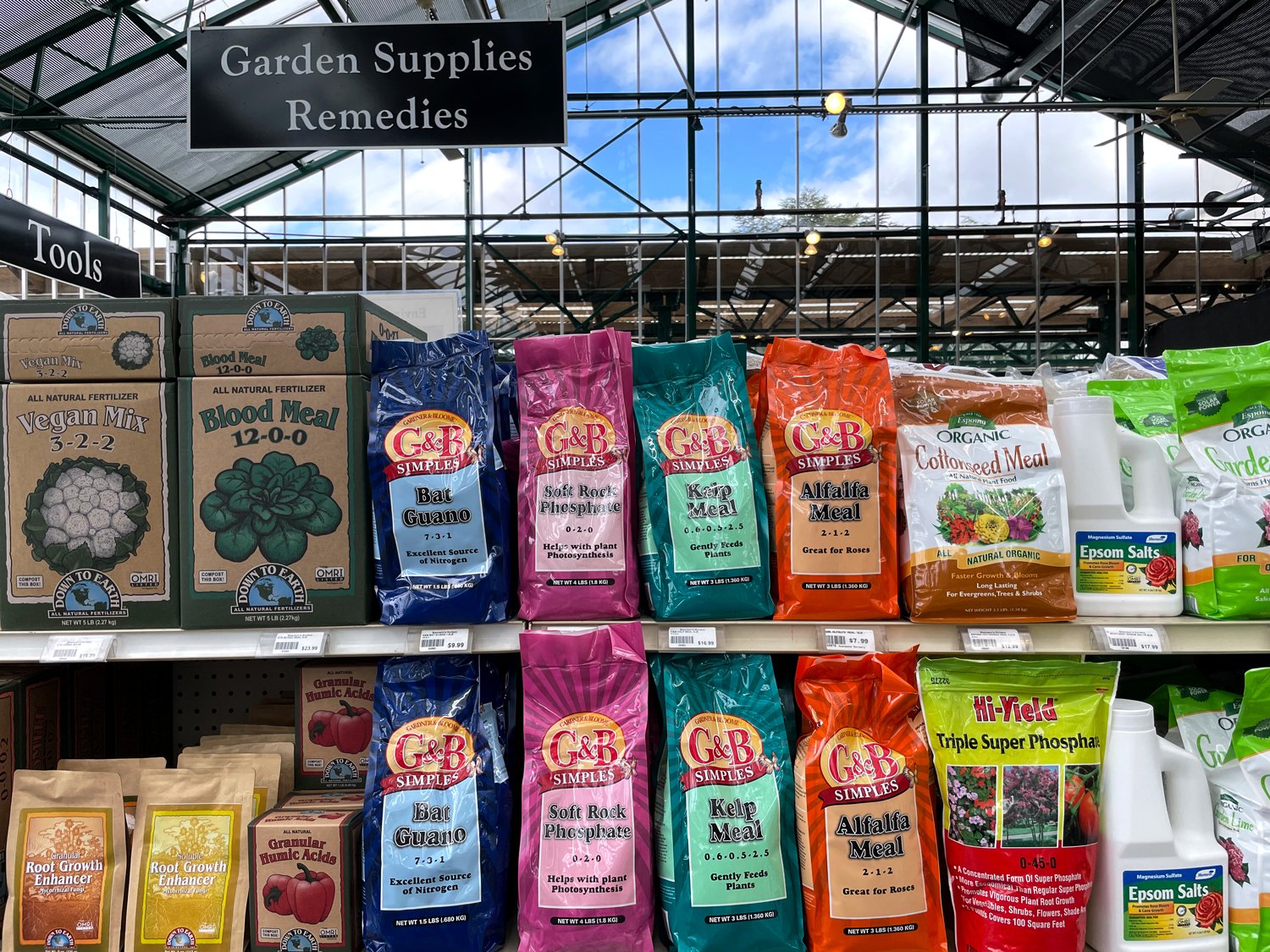You might be new to gardening, learning the mysteries of plants, soil, seasonal changes, watering routines, etc. All of us (even us professionals) are engaged in constant learning about plant preferences, watering, sun or shade, etc.
What about fertilizer (aka “plant food”)?
Perusing the fertilizer shelves at Swansons (or any garden store) can feel overwhelming at first. So many choices! So many specialties! Do I really need fertilizer? Will my plant survive if I don’t find the perfect fertilizer match?
And what do all those numbers mean???
THE NEED for Fertilizer
First, be assured that your plant is unlikely to die from lack of or the wrong type of fertilizer. Chronic nutrient deficiency left untreated for a while (maybe weeks in a vegetable or annual, months or years in a larger plant) might contribute to a plant’s decline, but serious stress is more commonly a sign of watering, disease, or pest issues.
Over-fertilizing is a bigger risk — stressful for plants and organisms, and potentially harmful to soil and groundwater, especially if inorganic fertilizer is overused.
Your plants need the right nutrients to survive, but in a natural environment, they receive a lot through healthy soil, water, and sunlight. Adding fertilizer is a way to supplement these natural sources, especially for younger and heavy-feeding plants, or if your soil isn’t very fertile to begin with.
Or, if you’re wanting that Show Garden, the right fertilizer can make your plants really pop! The Butchart Gardens in Victoria, B.C. pictured above, uses a carefully-planned fertilizer program (not to mention their staff of fifty full-time gardeners!) to keep their displays looking spectacular year-round.
FEED THE SOIL
We primarily feed the plants by feeding the soil. The goal is not to feed the soil just until the plants use up the nutrients and we have to feed it again; instead, the goal is to build the soil to make it more nutrient-rich and as self-sustaining as possible. So we first need to make sure our soil has the drainage and organic matter it needs. Then fertilizers are applied to the soil, by mixing in during planting, or sprinkling on soil surfaces over the root zones.
Garden soil, especially in urban areas, often suffers from compaction and low fertility. The most effective way to amend that is to add organic matter, commonly in the form of compost. This improves drainage, holds moisture, increases air circulation, and fosters beneficial microbial communities. Our previous posts on how to mulch, the importance of compost, and building healthy soil go into more detail.
Fertilizers, then, can boost soil fertility for the plants we want to grow.
Foliar feeding (spraying liquid fertilizer solutions on the leaves) is sometimes used as an alternative to fertilizing soil. Leaf tissue can absorb certain compounds more efficiently than roots. Most research indicates that foliar feeding may be effective for treating certain nutrient deficiencies or boosting plant growth in times of stress. But for more cost-effective and long-term benefits for plants, feeding the soil is best.
THE NUMBERS: N-P-K
The three numbers you see on most fertilizers are the analysis of essential elements, or “macronutrients” in the fertilizer and include:
N - Nitrogen: The most basic element essential to plant life, evident in the growth of foliage.
P - Phosphorus: Fosters flower and fruit production.
K - Potassium: (Latin term: Kalium) Supports root development, overall vigor, and disease resistance.
The numbers are the percentage of these macronutrients within the total mix, so 6-3-4 indicates 6%-3%-4% respectively, of N-P-K. Most fertilizers include a balance of these three, but some are skewed toward one for a specific purpose. Examples are E.B. Stone® Organics Lawn Food, (10-1-4), or Espoma® Flower Tone Bloom Booster, (3-4-5).
For most (and especially newer) gardeners, we encourage using balanced fertilizers with all three macronutrients included. But there are some preferences among different plant types:
Green, leafy plants such as lawns and salad greens are generally heavy feeders of nitrogen.
Fruiting plants such as tomatoes, cucumbers, and melons like a balance of nutrients but need fairly frequent feeding.
Perennials, trees and shrubs (incluing fruiting types) also prefer a balance of nutrients but at lower or less-frequent levels.
Higher numbers indicate higher concentrations of these elements. Is that better for your plants? Not necessarily. They are often found in synthetic fertilizers, such as lawn food with high nitrogen. High concentrations can bring quick, dramatic results, such as quick greening of your heavy-feeding lawn for that summer wedding. But the effect can be temporary and not so good for long-term health. If applied too heavily or not sufficiently watered in, high-number fertilizers can "burn" plants similar to salt toxicity. In most cases, it’s best to add nutrients slowly for the long term. For a healthy lawn, supplement it in fall and spring with a slower release lawn food.
So look for the proportion of the numbers, rather than their volume.
The package ingredients might also list several “micronutrients” such as calcium and magnesium. A deficiency of one or a combination of these can cause problems. When diagnosed, they can often be corrected by adding single ingredient fertilizers or supplements. If not in combination fertilizers, you can find them in specialized products such as magnesium sulfate or dolomite lime (calcium carbonate).
ORGANIC VS. SYNTHETIC
Organic fertilizers generally have lower concentrations than synthetic (inorganic) fertilizers, and thus are slower to cause dramatic effects, positive or negative. Organics are safer to use on most plants, with less risk of over-fertilizing. Also, organics tend to add minerals, micronutrients, and even organic matter to the soil, much more than synthetics do, and are less likely to leach into groundwater.
ALL-PURPOSE FERTILIZERS
These are balanced, low-concentration fertilizers that don’t alter soil pH. Great for new gardeners or small spaces with a variety of plants. Swansons features a variety of options, including Dr. Earth® All-Purpose, Espoma® Plant-tone, and E.B. Stone® Sure Start.
SPECIALTY FERTILIZERS
Some fertilizers are specially formulated for a specific plant’s needs. Which one should you choose for your tomato plant, or azalea or rose bush? It helps that many fertilizers are conveniently labeled “Tomato…”, “Azalea…” and “Rose…” Before we get into details, remember that using the “wrong” type of fertilizer isn’t likely to cause great harm. But the designated fertilizers are more effective for their target plant types.
Roses: Rose fertilizer is a balanced food that helps slightly raise soil pH to a less-acidic level preferred by roses.
Acid-loving plants (rhododendrons, camellias, blueberries, most evergreen plants, etc.): fertilizer for acid-lovers feeds while maintaining the lower pH in the soil that these plants need.
Flowers (especially annuals): bloom-boosting fertilizer has a higher percentage of phosphorus to boost flower development.
Bulbs: bulb fertilizer also has higher phosphorus plus bone meal to enhance both flower and bulb (root) development.
Lawn: a higher nitrogen percentage keeps lawns green, as mentioned earlier.
What is slow-release fertilizer? This type of fertilizer is good for many types of applications and is often used to supplement other fertilizers in container plantings. Many organic fertilizers are naturally slow-release. Others (such as Osmocote®) are pelletized for this function.
SINGLE-INGREDIENT FERTILIZERS
Natural-source fertilizers are derived from by-products from agricultural animal or plant processing, or collected in the wild (such as seabird or bat guano). These are best used as a supplement to other fertilizers for more complete soil nutrition. These ingredients are also commonly included in organic fertilizers.
Bone Meal: a natural source of phosphorus and calcium, especially good for planting bulbs and perennials.
Fish Emulsion: a natural source of nitrogen that breaks down slowly in soil.
Blood Meal: a natural source of high nitrogen. Too intense for some, but sometimes used to revive struggling plants. (Caution: if you’re not sure why a plant is struggling, fertilizing could push it over the edge. Ask us about a diagnosis first!)
Rock Phosphate: a natural, slow-release source of phosphorus to help flower and root development.
Cottonseed, Alfalfa, and Kelp Meals: natural, plant-based, low-intensity fertilizers favored by many organic gardeners for trees and shrubs. In addition to providing nutrition, these can help condition soil.
MYCORRHiZAE & OTHER MICROBES
Many organic fertilizers we carry include dormant bacteria and fungi such as mycorrhizae, which can significantly improve nutrient uptake in plant roots. Many of these organisms occur naturally in healthy soils. But the compacted, low-fertility soils we described earlier can benefit from the jump-start that these added microbes supply.
We hope this helps make your fertilizer choices a little clearer. Remember:
Feed the soil for long-term plant health
Under-fertilizing is always better than over-fertilizing
We are always here for your fertilizer and other gardening questions!


